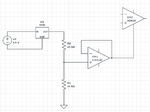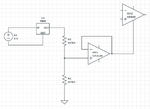kalifed
Junior Member level 3
Hello everyone,
I am currently reading a lot about the different usages of op-amps, I am getting better but I still have some practical questions.
Let's say you want to use an op-amp as a buffer for a simple tension divider:

Suppose that Vin is 3V. How would you proceed to select your op-amp? I would just go fo the highest input impedance...
Thank you!
I am currently reading a lot about the different usages of op-amps, I am getting better but I still have some practical questions.
Let's say you want to use an op-amp as a buffer for a simple tension divider:

Suppose that Vin is 3V. How would you proceed to select your op-amp? I would just go fo the highest input impedance...
Thank you!


